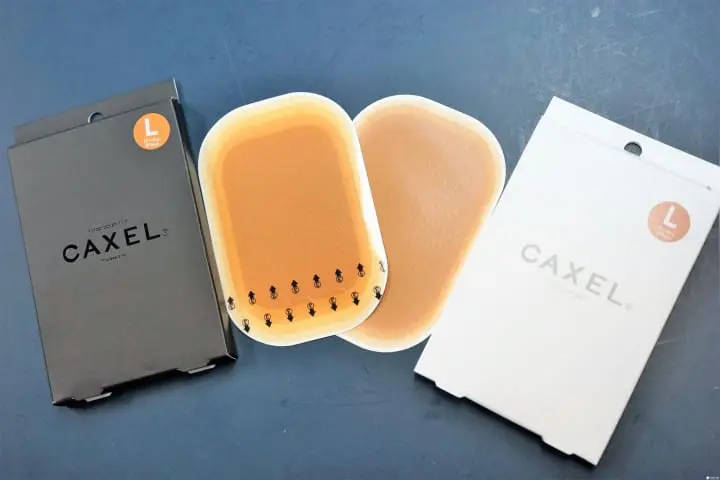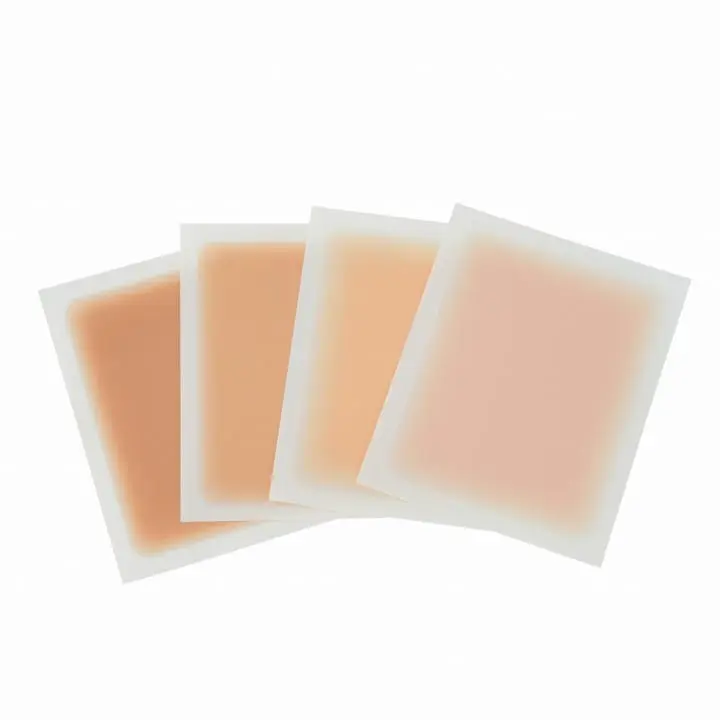Tattoo Seals: A Guide to Visiting Japanese Hot Springs with Tattoos

Tattoos as a fashion statement are slowly being accepted in Japan, but there are cases where you may be denied access to a hot spring, pool, or even public beaches. Here are different ways to cover your tattoos using body stickers.
Tattoos are still seen by many in Japan as being only something that criminals or yakuza have and as such there are many people still who are afraid of people that have tattoos. As a result, it is common for those with body art to be refused entry into hot springs and public baths, swimming pools or even public beaches.
While this is slowly changing, there are many institutions around the country that still have bans on tattoos in place in order to avoid any unnecessary problems that the aforementioned tattoo-bearing types might cause.
However, as tattoos are quite commonplace or part of traditional cultures overseas, and because the number of international visitors to Japan is increasing, the overall situation for those with body art is improving. In some facilities, visitors will be allowed to enter the bath or pool if they cover their tattoos with a seal, or skin-tone sticker.
In this article, we will take a look at three different popular ways to cover tattoos.
1. Tattoo Cover Aqua

Photo courtesy of: ALAE Co.
Tattoo Cover AQUA is a tattoo cover that sticks to the body like a temporary tattoo: you moisten it with a wet tissue or cloth and paste it to your body.

There are four color variations to choose from; from left to right in the photo are extra light, dark ocher, pink, and light. The shade stripe at the top of the sheet indicates the color that it will become when applied.
How to Use These Tattoo Seals
These sheets are about the size of a postcard, so it is a good idea to cut them to fit the tattoo that you wish to cover. This time, we used the extra light sheet.

Remove the transparent sheet and lay it on the tattoo you want to hide.

Wet the overlaid sticker thoroughly with water. Make sure to press the wet cloth or tissue firmly to your skin in order to ensure that the cover transfers properly.

If you look at it up close, it almost seems like there is a thin layer of cloth over your skin, but, as a result of this texture, when viewed from afar, it doesn't stand out very much. Despite being applied with water, these transfers are water proof and can easily be worn in hot springs or even pools. After use, you can easily clean them off your tattoo by scrubbing them gently with a soapy washcloth or oil-based cleanser.
Price
One package includes 10 sheets and costs 2030 yen with tax. They are purchasable online via the following website, and shipping to Japan is free. If you would like these covers shipped overseas, please refer to their site for details.
ALAE Co.
https://www.alae-japan.com/english/
2. CAXEL

Photo courtesy of: CAXEL
CAXEL are an ultrathin medical grade film used to cover tattoos.

These come in two shades, ocher (left) and natural (right). In addition to the M size sheets (80x60mm) and L size sheets (120x80mm), there are also mini and finger sized sheets available on their website. Those that come in the black packaging are the film type, while the white packaging are a sticker type; the film type measure only 0.07mm thick, which is exceptionally thin.
How to Use These Tattoo Seals
Here are the instructions for the film type; we used the natural shade.

First, peel off the sheet labeled '1' on the back of the film,

and place the film over the tattoo you wish to cover up. As you press it down over the tattoo, peel off the '2' sheet.

Then, remove sheet '3' and you're done.

With the film type, it does not feel as though your pores have been blocked, and this breathability is what makes these films quite comfortable to wear. In addition, there is a gradation in shade towards the ends of the film, which helps them to better blend into your natural skin tone.

One of the main points of these films is that they can easily be peeled off by hand after use.
Price
The M size package comes with 5 sheets and costs 1296 yen, with tax. The mini size package (6 sheets) and L size (5 sheets) cost 1620 yen, with tax. These can be purchased at Don Quijote. For details, please refer to the following website.
CAXEL
http://caxel.jp/ (Japanese)
3. Foundation Tape

Photo courtesy of: LoginMyLife Co. LLC
With strong sticking power that is difficult to peel off even after several days, foundation tapes are said to be wearable for about a week in everyday life.

Photo courtesy of: LoginMyLife Co. LLC
These tapes come in four colors. From the left: tan ocher, ocher, beige ocher, and pink ocher.
How to Use This Type of Tattoo Seals
Peel off the white mounting and place the colored portion of the tape over the tattoo. Hold the tape down with the palm of your hand and the transparent film will naturally peel off. When you want to remove it, lift up one edge of the tape and slowly peel it away from your skin like a bandaid.
Price
The sheets are about half the size of a post; one package contains 12 sheets and costs 2376 yen with tax. They can be ordered online from the following site. Please refer to this site for more details.
LoginMyLife
http://foundation-tape.net/ (Japanese)
Because all of the products mentioned in this article affix directly to the skin (and therefore the tattoo), they should only be used on tattoos that have fully healed.
In order to allow more international visitors to fully enjoy the various bathing and water attractions in Japan, the number of places where "hidden tattoos are OK" is increasing. If you can cover your tattoos with a sticker or tape, you too can enjoy your time in a hot spring or pool in Japan!
** For a specific location's policy on admission or tattoos, please refer to their website.
FAQ
Can you go to hot springs in Japan if you have tattoos?
In Japan, the traditional association of tattoos with criminal activity has led many public hot springs and other facilities to have strict policies against admitting individuals with tattoos. However, attitudes toward tattoos are gradually changing, especially in tourist areas, where some onsens are relaxing their rules regarding tattoos. It is advisable for individuals with tattoos who wish to visit hot springs in Japan to research specific facilities, as some may allow guests with tattoos if they can be covered or provide private options for those with tattoos to enjoy the onsen experience. Policies regarding tattoos in Japanese onsens vary by location and establishment, so it’s best to check in advance to ensure a smooth and enjoyable visit.
How to cover tattoos for onsen in Japan?
To cover tattoos when visiting an onsen in Japan, where tattoos are traditionally associated with negative connotations, there are several strategies available. Guests can use special concealing makeup or foundation, waterproof stickers, or bandages provided by some onsens. Alternatively, wearing long-sleeved clothing or utilizing towels strategically can help conceal tattoos. Some onsens offer private rental baths for guests with tattoos to enjoy the experience in privacy. Clear communication with the onsen establishment prior to the visit is essential to understand their specific tattoo policies and guidelines, ensuring a respectful and enjoyable onsen experience while adhering to local customs and traditions.
Can you go in Hot springs with a new tattoo?
It is not advisable to visit hot springs with a new tattoo due to the potential risks involved. A fresh tattoo is essentially an open wound, making it vulnerable to infection when exposed to the bacteria, hot water, and minerals present in hot springs. The heat and chemicals in the water can increase sensitivity, discomfort, and the risk of color fading or damage to the tattoo. To protect the healing process and preserve the quality of the tattoo, it is recommended to wait until the tattoo has fully healed—typically after 2-4 weeks of proper care—before considering activities like visiting hot springs that could potentially interfere with the healing process. Following the aftercare instructions provided by the tattoo artist is crucial for ensuring the proper healing and maintenance of the new tattoo.
Can you go to an onsen if you cover your tattoo?
In Japan, where tattoos can be culturally taboo and some traditional onsen have strict policies against admitting individuals with visible tattoos, there are ways for guests with tattoos to potentially visit onsens. Covering tattoos with makeup, waterproof stickers, bandages, or clothing is a common practice to respect local customs and enjoy the experience. Some onsen facilities may allow guests with tattoos if they are covered, while others provide options like private rental baths for those with tattoos to relax in privacy. Researching specific onsen policies, contacting them in advance, and being mindful of cultural norms are key steps for visitors with tattoos to potentially enjoy the therapeutic benefits of an onsen experience in Japan while respecting local traditions.
How to use a tattoo cover sticker?
Using a tattoo cover sticker involves preparing the clean, dry skin, cutting the sticker to fit the tattoo size, and peeling off the backing to expose the adhesive side. Carefully apply the sticker over the tattoo, smoothing it out to ensure a wrinkle-free application. Press the edges firmly onto the skin for a seamless blend with your natural skin tone, allowing it to set before any contact with water. When ready to remove the sticker, peel it off gently, clean the area to remove any adhesive residue, and consider storing reusable stickers for future use. It's important to follow the specific instructions provided with the tattoo cover sticker and conduct a patch test to avoid any adverse reactions to the adhesive or materials.
What are the rules on tattoos in Japan?
In Japan, tattoos carry cultural significance often associated with criminality and the yakuza, leading to rules and stigmas in certain traditional establishments like onsen, public baths, gyms, and pools against admitting individuals with visible tattoos. While attitudes are evolving, some places strictly prohibit entry for those with tattoos, while others may allow access if tattoos are covered appropriately. Policies vary by location, with some offering cover-up options or private facilities for guests with tattoos. It is recommended to check with establishments in advance to understand their specific rules on tattoos to ensure a respectful and smooth experience while visiting Japan and to adhere to local cultural norms and policies regarding tattoos.
Can Westerners show tattoos in Japan?
In Japan, especially for Westerners, displaying tattoos can elicit mixed reactions due to the cultural association of tattoos with the yakuza and traditional establishments like onsen often having strict no-tattoo policies. Westerners can cover tattoos with clothing or specialized products to adhere to local norms, although attitudes towards tattoos are gradually evolving, particularly in urban and tourist areas. Some establishments provide private facilities for guests with tattoos, and clear communication before visiting is advised to understand and respect the establishment's policies. Westerners with tattoos visiting Japan should be aware of local sensitivities and regulations to ensure a respectful and smooth experience during their stay.


































![[Just a short distance from Nagoya] Popular Taiwanese YouTuber Alan tours Aichi, Tokoname!](https://resources.matcha-jp.com/resize/720x2000/2026/01/08-255181.webp)

